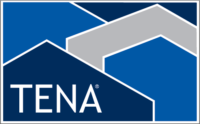To identify frequently occurring mortgage Quality Control audit exceptions, TENA analyzed the findings from thousands of QC audits it completed during the second quarter of 2016.
The analysis of audit findings identified numerous post-closing and pre-funding audit exceptions that were frequently cited during the second quarter of 2016. The most significant change between the frequently cited issues in the first quarter of 2016 to the second quarter 2016 was the increase attributable to the Loan Estimate and Closing Disclosure. The findings related to these disclosures doubled in the second quarter of 2016.
Audit Citations that TENA frequently noted during the second quarter of 2016 include:
- Third party provider fees improperly disclosed in blocks B and C of the Closing Disclosure based on whether the borrower could shop and did/did not shop. (Severity = Important)This citation is most notable because lenders are disclosing the title fees in Block B of the Closing Disclosure when the borrower was allowed to shop for title services and the title provider used was not listed on the Service Provider list. Block B fees are subject to the cumulative 10% tolerance test and reflect the fees for third party services that the borrower was unable to shop for or the fees for service providers that the borrower was allowed to shop for and the borrower chose to use a service provider that was disclosed on the Service Provider List. Block C fees are not subject to tolerances because the borrower was allowed to shop for the service provider and they did not select a service provider listed on the Service Provider List. By unnecessarily disclosing the title fees in Block B of the Closing Disclosure the fees are subject to the cumulative 10% tolerance test, rather than the no limit fee tolerance group. This is leading to lender’s providing a cure to the borrower in many cases where no cure would have been necessary if the title fees had been disclosed appropriately in Block C of the Closing Disclosure.
- IRS Form 4506-T was ineligible for processing. (Severity = Notation)In September of 2015 the IRS updated Form 4506 and Form 4506T to include a check box in the Signature section. When checked, the tax payer attests they have the authority to sign and request the information indicated on the form. Since March 28 2016, the IRS has refused to process these forms or provide transcripts unless this box is checked. There is also a caution flag in the instructions concerning this checkbox. Since March 28th, TENA has been unable to process 4506 and 4506-T forms that do not have the attestation box checked.Additionally, TENA frequently has been unable to process Form 4506-T with the IRS because the forms found in the file listed a designee on Line 5 other than TENA. Tax transcripts are a post-closing QC reverification requirement on all files where the Investor is Fannie Mae, Freddie Mac, or Federal Home Loan Bank, and a conditional requirement for FHA loans. Without a correct 4506-T form in the file TENA is unable to complete the required agency reverifications.
- Unsigned preliminary application. (Severity = Important)Both Fannie Mae and FHA require that a complete, signed, and dated version of the original and final Form 1003 or Form 1003(s) must be included in the mortgage file. Additionally, the standard application form (1003) contains authorization from the borrower for the creditor to obtain a credit report or other verifications. The following disclosure is above the applicant signatures in section IX “Acknowledgement and Agreement” on the 1003:Acknowledgement. Each of the undersigned hereby acknowledges that any owner of the Loan, its servicers, successors and assigns, may verify or reverify any information contained in this application or obtain any information or data relating to the Loan, for any legitimate business purpose through any source, including a source named in this application or a consumer reporting agency.
Credit reports must not be obtained unless it is for a permissible purpose under FCRA (see §1681b for a list of permissible purposes for consumer reports). Part of the QC audit is ensuring that credit reports are obtained ONLY for permissible purposes. By signing the loan application form, the applicant is giving permission to the lender to obtain a credit report from a consumer reporting agency. Without a signed initial application (or some other documentation that indicates that the borrower has provided permission to the lender to obtain a credit report) TENA is unable to validate that the lender had a permissible purpose to obtain a credit report; therefore, the lender may be in technical violation of the Fair Credit Reporting Act.
- Warning messages on the Collateral Underwriter did not appear to be addressed. (Severity = Notation)CU’s purpose is to identify appraisals with heightened risk of property eligibility or policy compliance violations, overvaluation, and appraisal quality issues. These warning messages direct reviewers to specific aspects of the appraisal that may warrant further attention. These messages do not need to be “cleared” and are simply intended to assist with the lender’s appraisal review. However, lenders are encouraged to review this feedback and address any potential issues prior to loan delivery. As a best business practice, TENA reviews each loan file to determine if any of the warning messages issued on the CU appear to have been addressed by the underwriter or appraisal review team. TENA is not looking to make sure that they were all cleared, just that they were acknowledged and appear to have been at least considered as part of the appraisal review process.
- Missing Documentation (Severity = Ranges from Important to Serious)The two documents that were most frequently missing in the second quarter of 2016 were:- Evidence that the borrower received a copy of the appraisal; and
– Evidence that the borrower received a copy of the Home Loan ToolkitTENA is not only reviewing the file to determine if these items were in the file, but also whether there was any evidence that the borrower received them. An easy way to cure these missing disclosures from being cited is to provide some form of evidence of their delivery to the borrower. Common items that indicate their delivery are emails, note logs, disclosure cover letters that list all items sent to the borrower, etc.







